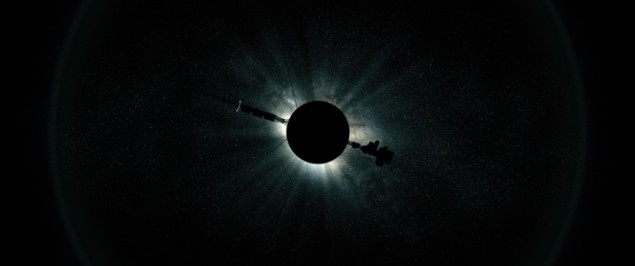Tushna Commissariat reviews the documentary film The Farthest: 12 Billion Miles and Counting

The first time I came across the Voyager mission, I must have been six or seven years old, and was poring over an astronomy encyclopaedia. I was amazed to read that a mission launched a full decade before I was born was still out among the stars, and that it bore music and messages from humanity that aliens may one day listen to. From those early days, my obsession with the Voyager mission flourished. Suffice to say, I did not expect any real revelations when it came to either the science or the cultural history of Voyager from The Farthest: 12 Billion Miles and Counting – the latest documentary film about this one-of-a-kind human endeavour. What I expected was a beautifully made film with some exceptional graphics that would tell the familiar tale of Voyager to me, which the documentary most definitely delivered. But I was pleasantly surprised to find that it also revealed several new-to-me and amazing facts, as told by those most closely associated with Voyager and its scientific discoveries.
Written and directed by Emer Reynolds, The Farthest is a feature-length documentary that brings together 25 original and current mission scientists, engineers and other Voyager team members. Using their tales and testimony, the film weaves together the enchanting, comprehensive and ultimately moving story of this farthest-travelled of space missions. Synonymous with the Voyager mission is the Golden Record – the 12-inch gold-plated copper phonograph, put together by celebrated astronomer Carl Sagan and a team of scientists, artists and musicians. It contains music, pictures and greetings from across our planet, in case either probe encounters any extraterrestrial life – and The Farthest also explains how this calling card to the universe was conceived and executed.
Launched in 1977 from Cape Canaveral in Florida, Voyager 1 and Voyager 2 were built to delve into our planetary neighbourhood and get a closer look at Jupiter and Saturn. The primary mission was swiftly extended, with Voyager 2 continuing on to explore Uranus and Neptune (to date, it is the only spacecraft to have visited these planets). Voyager 1, meanwhile, began to make the long journey towards interstellar space (which it officially reached on 25 August 2012). Indeed, the mission was extended three times and is still ongoing, as we remain in contact with both probes. As part of what is now known as the Voyager Interstellar Mission, the twin spacecraft are exploring the boundary of the “heliopause” – where the influence of the Sun’s magnetic field ends.

Early on in the film, Voyager’s project manager John Casani describes just how crucial and rare the planetary alignment was that allowed both Voyager craft to use “gravity assist” to visit the outer gas giants of our solar system, exploiting Jupiter’s orbital energy to slingshot further out into space. This specific – and fortuitous – planetary alignment only occurs once every 175 years. The film puts that into context by pointing out that the previous time this happened, we were still exploring our planet using wooden sailing ships, and the US president was Thomas Jefferson. But one of the most amazing facts The Farthest reveals is that, thanks to the slingshot, the Voyager probes actually slowed Jupiter’s orbit by about 30 cm per trillion years. The idea that something built by humans had a very real and lasting impact on a celestial body as powerful as Jupiter is a wonderful thought.
My only two tiny criticisms of the film are that often, you do not know who is speaking, as people’s names and titles only pop up at random intervals. It is also a bit annoying that the main story of the Voyager mission is interspersed with the (largely separate) story of the Golden Record – how it was made, what it contains and who was involved. While this is also interesting stuff, these cuts most often happen at an exciting juncture in the Voyager tale – just as the mission is approaching Neptune, say, or when it seems like something has gone wrong. But maybe this is a clever ruse to keep the viewer entranced and leave them at the edge of their seat to see how it all plays out.
Certain moments are indescribably touching, such as when members of the Voyager team recall how they were looking at pictures of Uranus when the Challenger tragedy occurred. They watched the explosion over and over again, but still had to keep on taking their own data.
Another touching moment is when image scientist Candice Hansen describes exactly how she felt when she first set eyes on Earth in the now-legendary “Pale Blue Dot” picture, the most amazing “family portrait” of our solar system, taken by Voyager 1 on 14 February 1990.
With its powerful imagery, glossy VFX scenes and balanced commentary from the men and women who turned the dream of an interstellar mission into a reality, The Farthest is a celebration of humanity at its best. I highly recommend you watch this film, especially if you need something uplifting in these gloomy times. The mere thought that these human-made machines will continue to boldly go, for possibly the next billion years, where no human has gone before, is to me both comforting and tremendous.
- Dir. Emer Reynolds The Farthest: 12 Billion Miles and Counting 2017 Abramorama 120 min £8.99 DVD
- Enjoy the rest of the December 2017 issue of Physics World in our digital magazine or via the Physics World app for any iOS or Android smartphone or tablet. Membership of the Institute of Physics required



